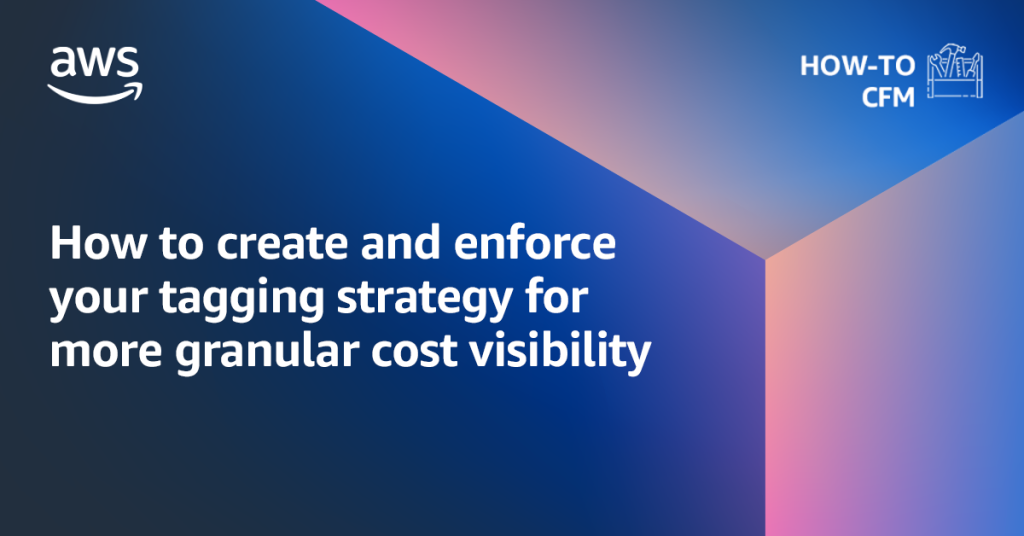AWS Cloud Financial Management
Tag: Track and Allocate
Improve cost visibility of Amazon ECS and AWS Batch with AWS Split Cost Allocation Data
We’re excited to announce that the cost data for Amazon Elastic Container Service (Amazon ECS) tasks and AWS Batch jobs is now available in the AWS Cost and Usage Reports (CUR). With AWS Split Cost Allocation Data, you can easily understand and optimize cost and usage of your containerized applications, and allocate application costs back to individual business entities based on how shared compute and memory resources are consumed by your containerized applications. Learn how to opt into and view your Split Cost Allocation Data.
ICYMI: Increase cost visibility, optimization, and overall CFM maturity
Check out these resources to learn how you can optimize cloud costs, increase cost visibility, establish your organizational CFM framework, implement automation, and understand what strategies contribute to the success of cloud-mature enterprises.
Kickstart your cost optimization efforts with confidence
How can you build a “team” that understands, executes, and optimizes CFM strategies that maximize business value from the cloud? We share ways you can accelerate your stakeholders’ optimization efforts, and establish and encourage cross-team communication to learn from each other, share what’s worked well, and accelerate best practice adoption.
How to create and enforce your tagging strategy for more granular cost visibility
In this post, we’ll show you what tools you can use, and how you can use them to define, implement, and enforce a tagging strategy that improves your organization’s cost awareness using AWS Cost Explorer, AWS Organizations, AWS Tag Editor, and AWS Config.
More flexibility in grouping AWS resources and accounts with AWS Cost Categories
AWS has launched two new features for creating AWS Cost Categories rules. It has added a new dimension -“Region” to its category rule, and a new dimension operator “OR” to define cost categories rules across dimensions. You can now create cost categories rules with six types of dimensions – “Linked Account”, “Charge Type”, “Service “, […]
Using AWS tools to implement your Cloud Financial Management strategy
To operationalize your CFM strategy, you need to identify what tools are available to help you allocate, visualize, and control your AWS cost and usage. In this blog, we’ll share our latest CFM Talk session, where we walk you through an example optimization (using AWS Graviton) to shed light on the framework for how you should think about each CFM pillar and layer tooling into your strategy.
How-to chargeback shared services: An AWS Transit Gateway example
In this blog, we will review how to define a chargeback and cost allocation strategy, and then walk you through a reference architecture to build and automate the chargeback process. The example will provide prescriptive guidance to chargeback AWS Transit Gateway costs.
Getting started with AWS Billing Conductor SKU pricing rules
AWS Billing Conductor (ABC) has launched SKU pricing rules, which allow you to change the rate for any resource running in your environment. In this blog, we’ll walk through how you can get started using this new feature, which lets you apply your chargeback method in a more targeted and consistent manner each month.
Starting your Cloud Financial Management journey: Cost visibility
As your company starts to innovate faster, develop new solutions, and take advantage of the flexible model of the cloud, you need to ensure your CFM setup can handle it all. To help you get started, this blog series is going to take you through each of the four AWS CFM principles: See, Save, Plan, and Run. We’ll give you practical recommendations you can implement to set your business up for success.
AWS Cost Explorer’s New Look and Common Use Cases
Update: By April 19, 2023, you will no longer be able to roll back to the old Cost Explorer UI. Feel free to submit feedback in the console. We’ll continue improving the experience. The following blog was published on Nov.8, summarizing the Cost Explorer UI changes made in October this year. We’ve since incorporated your […]









